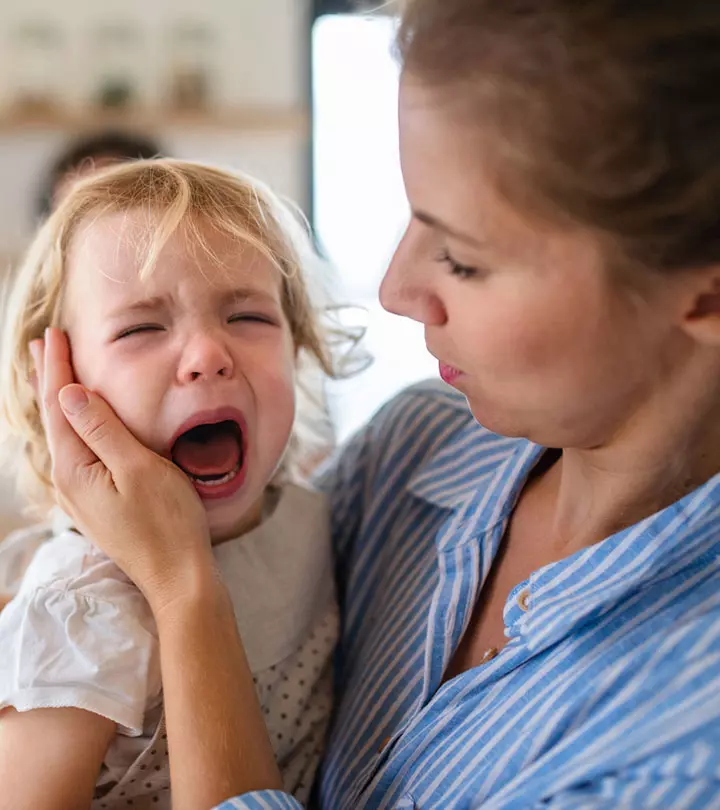
Image: iStock
A parent’s greatest concern is the safety of their precious baby, particularly within the confines of their own home. Before your baby’s arrival, you likely took extensive precautions to childproof your home. Yet, regrettably, infants still sustain injuries from falls, poisoning, or burns every day. It’s an unfortunate reality because it’s virtually impossible to anticipate every potential hazard. Moreover, identifying threats in items that have been present in your home for years can be challenging. However, there’s no need to agonize or exhaust yourself trying to identify every object that could pose a risk. We’ve compiled a list of items that might be harmful to your baby, things you might not have considered. The solution, however, is not necessarily to eliminate these items entirely. Instead, exercise vigilance when your children are in proximity to or interacting with these objects, and they will remain safe and sound!
1. Lending Them Your Cell Phone
We understand that this one is hard to avoid but you need to try to keep your kids away from electronic gadgets as much as possible. Parents often use cellphones as a magical device to keep kids entertained while they get stuff done around the house in peace or have some quality time, but it is important to keep in mind that phones emit radiation that can be very harmful to your little kids. In addition to this, several studies have been conducted that have found an association between a child’s exposure to cell phones and neurological problems, psychological addictions, and behavioral problems (1).
2. Different Kinds Of Pillows
As an adult, you might believe that providing your baby with a pillow is a wise choice. After all, a good pillow contributes significantly to your own sleep quality and provides neck support. However, it’s crucial to remember that babies aren’t built the same way. Young parents might assume, based on their own experiences, that a baby also requires a pillow, but it’s advisable for your baby not to sleep with a pillow until they reach toddler age.
It’s recommended that babies sleep on a firm, flat surface devoid of pillows, blankets, and other soft bedding until at least the age of 1, and preferably until 18 months or later. There are several compelling reasons for this practice. For instance, soft pillows can pose a suffocation risk if the baby turns in their sleep and buries their face in the pillow’s plush surface. As they grow, they might even use it as a stepping aid to climb out of the crib. Additionally, pillows with the wrong fillings, such as feathers or down, can trigger severe allergic reactions, potentially leading to various health complications for the baby.
3. Giving Them Fruit Juice To Drink
Fruit juices have been the number one hack that most parents use to get some healthy foods to go down their kid’s throat but they may not be as healthy as you thought they were. Fruit juice is a good source of vitamins and minerals, but it also contains high amounts of sugar. This can make children want to consume copious amounts of juice which will only cause cavities and one hell of a sugar rush. If you want your kids to get all the good vitamins and fibers from fruits the best thing to do is to get them to eat them alongside a vegetable. This way, they can benefit from all their nutrients as well as hydrate themselves and improve their eating habits. Next time make a simple summer salad and let your kids chop on the fruits instead of slurping them down.
4. Humidifier
This might be surprising to some, as many parents use humidifiers to create a soothing environment for their babies. To clarify, a humidifier can indeed be a valuable addition to your child’s room because it can have a positive impact on their skin and respiratory health (2). However, if not used correctly, it can lead to various issues. The most common problems associated with humidifiers include mold growth and excessive moisture. To avoid these problems, pediatricians recommend using a humidifier in conjunction with a humidity-measuring device, often called a hygrometer. Alternatively, you can opt for a device with a built-in hygrostat to help you monitor the humidity level. It’s generally advised to maintain the humidity level at around 50%. This approach ensures that you’re always aware of when it’s time to replace your humidifier to ensure your baby’s safety.
Keeping your child safe from every harm and danger may seem like a mammoth task that never ends but this doesn’t have to be the case. As long as you are made aware of the dangers in their immediate surroundings and take precautions against them, your baby will be happy and healthy. Happy parenting!
















